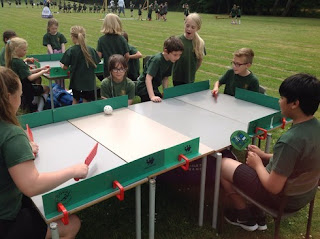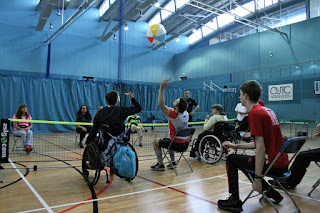I think we can all appreciate the huge potential that physical activity has to enhance our wellbeing. Even relatively short bursts of exercise like going for a brisk walk can increase our mental alertness, energy
and generate a positive mood.
So when it comes to our kids, I'm sure that we fully embrace the value of exercise to our children’s Health. However, we often assume that because kids are kids, they have energy to burn and get all the exercise that they can handle, at school and from enjoying all kinds of sport. But guess what?
NOT ALL KIDS LOVE SPORT. SAY WHAT?
It seems, It’s about perception. A recent survey explored how young people regard sport. The survey divided children into two groups, Sporty and Non-Sporty
It seems, It’s about perception. A recent survey explored how young people regard sport. The survey divided children into two groups, Sporty and Non-Sporty
So, how do SPORTY KIDS think about sports?
Interestingly, the survey showed that there were several instances where young people that viewed themselves as ‘non-sporty’ were involved in fitness or active lifestyles but didn’t see that as sportiness.
This included: Horse riding, cycling to get about, walking, yoga.
Someone like Pete here, really wasn't
When speaking to the young
people, in the "Sporty" group, the activities that they most associated with sport
tended to be what might be considered ‘traditional sports’, such as: Rugby, Football, Hockey, Tennis and Athletics.
Someone like Joe here, is convinced about the merits
of Sport.
Joe said, "When you’ve had a tough
training session and you’re really feeling it, you know you’ve worked hard and
it just makes you feel good."
Interestingly, the survey showed that there were several instances where young people that viewed themselves as ‘non-sporty’ were involved in fitness or active lifestyles but didn’t see that as sportiness.
Someone like Pete here, really wasn't

convinced of the merits of competitive sport. Typically agreeing with statements such:
"In PE it’s not like we’re
playing in a cup match, but some people take it so seriously and are so
competitive – it really takes any fun out of it.”
Impact on self-esteem
Exercise not only has a
positive impact on our physical health, but it can also increase our
self-esteem. Self-esteem is how we feel about ourselves and how we perceive our
self-worth. It is a key indicator of our mental wellbeing and our ability to
cope with life stressors.
Physical activity has been
shown to have a positive influence on our self-esteem and self-worth. This
relationship has been found in children, adolescents, young adults, adults and
older people, and across both males and females.
So, how can we better engage with children like Pete?

These types of activities can provide the perfect "Hook" to engage with "Non-Sporty" kids but still have all the physical and mental health
benefits listed above.
Play floor activities where
everyone is on the same level (e.g. sitting volleyball).
So, how can we better engage with children like Pete?
What we learnt from Disability
SPORT.
Adapted and Inclusive sports activities were designed to engage and support people with a disability. We have found that for sports and sporting activities to engage, they must.....
Provide a challenging yet fun
experience. They must be a safe and inclusive activity. They should provide opportunities for expression. Sports that are specific or
adapted, have to be
Easy to take part in. Be able to accommodate all skill levels. Be flexible regarding competition. They should also provide
a sense of belonging: a
feeling of being respected, valued for who you are.
So, It’s NOT just about Disability
Adapted and
Inclusive Sports, Like Siting Volleyball are great fun and they Engage. They work! Table Cricket or Polybat. Soft, easy to do activities.
These types of activities can provide the perfect "Hook" to engage with "Non-Sporty" kids but still have all the physical and mental health
benefits listed above.
So, how can we better engage
and deliver to both our Sporty and Non-Sporty kids? Well, let’s Mix it up.
A mixture of traditional,
non-traditional and non-competitive activities is key to developing a
successful inclusive PE programme engaging all students.
Level the playing field.
Whilst there is still a big
demand for traditional sports such as rugby and football in school,
introducing new sports such as Sitting Volleyball, Boccia and simulated Visually Impaired activities such as Goalball has been highly
popular with students.
The bottom line. Make it Fun and make it Inclusive.






No comments:
Post a Comment